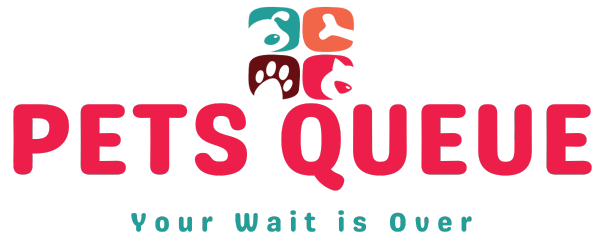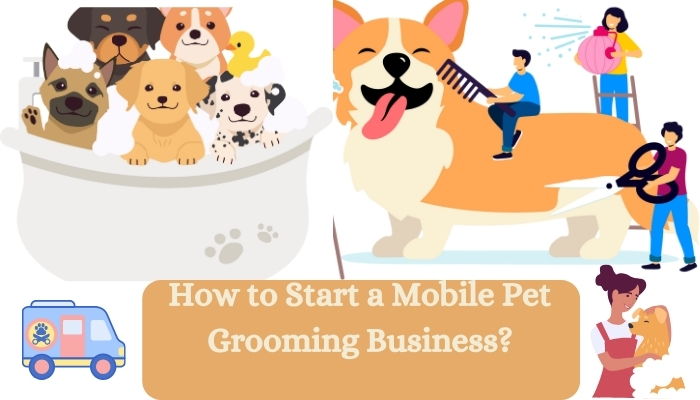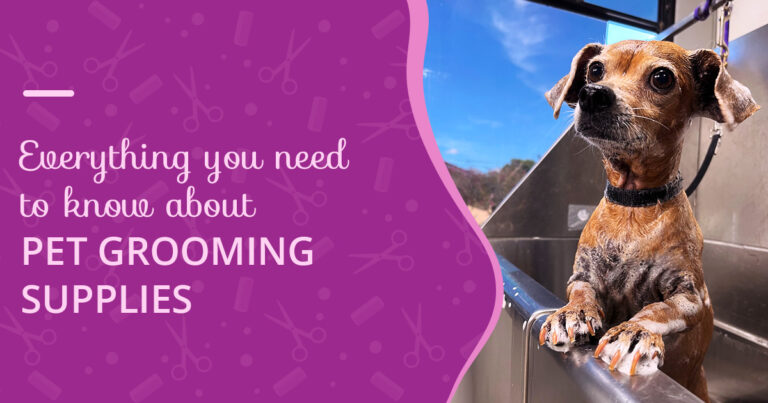Budget-Friendly Dog Grooming Tips for Pawsome Results
Keeping your dog well-groomed is an essential part of responsible pet ownership. Not only does regular grooming help your furry friend look and feel their best, but it also plays a crucial role in their overall health and well-being. However, professional grooming services can be expensive, especially if you have a tight budget. The good news is that there are plenty of budget-friendly dog grooming tips that you can easily do at home. In this article, we will explore various DIY grooming techniques and tools that will help you keep your dog looking great without breaking the bank.
Key Takeaways
- Regular grooming is important for your dog’s health and well-being.
- DIY grooming can save you money and can be done with basic tools and supplies.
- Choosing the right brush for your dog’s coat type is essential for effective grooming.
- Homemade dog shampoo recipes can be made with natural ingredients and are budget-friendly.
- Trimming your dog’s nails safely and cleaning their ears and teeth regularly can prevent health issues.
Importance of Regular Grooming for Dogs
Regular grooming is not just about making your dog look good; it is also about maintaining their health and preventing potential problems. Grooming helps to keep your dog’s coat clean and free from mats and tangles, which can lead to skin irritations and infections. It also allows you to check for any abnormalities such as lumps, bumps, or parasites that may require veterinary attention.
In addition to keeping your dog’s coat in top condition, regular grooming also helps to maintain their overall hygiene. This includes cleaning their ears, trimming their nails, and brushing their teeth. Neglecting these areas can lead to painful ear infections, overgrown nails that can cause discomfort or injury, and dental issues such as gum disease and tooth decay.
DIY Dog Grooming Tools and Supplies
Investing in the right tools and supplies for DIY dog grooming is essential. While there may be an initial cost involved, it will save you money in the long run by reducing the need for professional grooming services. Some essential tools include a slicker brush for removing loose hair and tangles, a comb for detangling and finishing touches, nail clippers or a grinder for trimming nails, ear cleaning solution and cotton balls for cleaning ears, and a toothbrush and toothpaste specifically designed for dogs.
When it comes to finding affordable grooming supplies, there are a few options to consider. First, check your local pet stores for sales or discounts on grooming products. You can also look for online retailers that offer competitive prices. Another option is to make your own grooming solutions using natural ingredients, which we will explore in more detail later in this article.
The Right Brush for Your Dog’s Coat Type
| Coat Type | Brush Type | Frequency |
|---|---|---|
| Short-haired | Bristle brush | Weekly |
| Medium-haired | Slicker brush | Weekly |
| Long-haired | Pin brush | Daily |
| Curly-haired | Comb | Daily |
Using the right brush for your dog’s coat type is crucial for maintaining their coat health. Different breeds have different coat types, such as short, long, curly, or double coats. Each coat type requires a specific type of brush to effectively remove loose hair and prevent matting.
For short-haired dogs, a bristle brush or a rubber curry brush works well to remove loose hair and distribute natural oils. Long-haired dogs may require a slicker brush or a pin brush to detangle and remove mats. Curly-haired dogs, such as poodles, benefit from a slicker brush or a comb with wide-spaced teeth to prevent matting. Double-coated breeds, like German Shepherds or Huskies, may require an undercoat rake or a shedding blade to remove loose hair from their dense undercoat.
It’s important to brush your dog’s coat regularly, at least once or twice a week, to prevent matting and keep their coat healthy and shiny. Be gentle when brushing and take your time to avoid causing any discomfort or pain to your furry friend.
Tips for Bathing Your Dog at Home
Bathing your dog regularly is an essential part of their grooming routine. However, the frequency of baths depends on your dog’s breed, activity level, and coat type. Generally, most dogs benefit from a bath every 4-6 weeks. Over-bathing can strip their coat of natural oils and cause dryness and irritation.
When bathing your dog at home, it’s important to use a dog-specific shampoo that is formulated for their coat type. Avoid using human shampoos, as they can be too harsh and cause skin irritations. Wet your dog thoroughly and apply the shampoo, working it into a lather. Be sure to rinse your dog thoroughly to remove all traces of shampoo, as leftover residue can cause skin irritations.
One challenge when bathing your dog at home is avoiding getting water in their ears. To prevent this, you can place cotton balls in their ears to absorb any water that may enter. It’s also important to be mindful of the water temperature, as dogs are more sensitive to hot water than humans. Lukewarm water is usually the best option.
Homemade Dog Shampoo Recipes

If you prefer to use natural ingredients on your dog’s coat, you can make your own homemade dog shampoo. Not only are these recipes budget-friendly, but they also allow you to control the ingredients and avoid harsh chemicals that may be found in commercial shampoos.
One simple recipe for homemade dog shampoo is mixing equal parts of apple cider vinegar and water. This mixture helps to restore the pH balance of your dog’s skin and coat, leaving it clean and shiny. Another recipe involves mixing 1 cup of oatmeal with 1 cup of baking soda and adding enough warm water to form a paste. This oatmeal and baking soda mixture is great for soothing itchy or irritated skin.
When using homemade shampoo, it’s important to store it properly to prevent spoilage. Keep it in a clean, airtight container and store it in a cool, dry place. It’s also important to use the shampoo within a reasonable timeframe to ensure its effectiveness.
Trimming Your Dog’s Nails Safely and Easily
Trimming your dog’s nails is an essential part of their grooming routine. Overgrown nails can cause discomfort or even lead to injuries if they break or get caught on something. However, many dogs are not fond of having their nails trimmed, so it’s important to approach this task with patience and care.
To trim your dog’s nails safely and easily, you will need a pair of nail clippers or a grinder specifically designed for dogs. Start by getting your dog comfortable with having their paws touched and manipulated. Gradually introduce the clippers or grinder to them, allowing them to sniff and inspect the tool. This will help them become more familiar and less fearful of the process.
When trimming your dog’s nails, be cautious not to cut too close to the quick, which is the sensitive part of the nail that contains blood vessels and nerves. If you accidentally cut into the quick, it can cause bleeding and pain. It’s better to trim a small amount at a time and gradually work your way closer to the quick.
If you are unsure about trimming your dog’s nails yourself, you can always seek the help of a professional groomer or a veterinarian. They have the experience and expertise to trim nails safely and efficiently.
Cleaning Your Dog’s Ears and Teeth
Cleaning your dog’s ears and teeth is an important part of their overall grooming routine. Regular ear cleaning helps to prevent ear infections and remove excess wax and debris. Dental hygiene is equally important, as dental issues can lead to pain, infection, and even organ damage if left untreated.
To clean your dog’s ears safely and effectively, you will need an ear cleaning solution specifically formulated for dogs and cotton balls or gauze pads. Gently lift your dog’s ear flap and apply a few drops of the cleaning solution into their ear canal. Massage the base of their ear for a few seconds to help distribute the solution. Then, use a cotton ball or gauze pad to wipe away any dirt or debris that comes out.
When it comes to cleaning your dog’s teeth, it’s important to use a toothbrush and toothpaste specifically designed for dogs. Human toothpaste contains ingredients that can be harmful if swallowed by dogs. Start by getting your dog comfortable with having their mouth touched and manipulated. Gradually introduce the toothbrush and toothpaste, allowing them to sniff and taste it. Gently brush their teeth in a circular motion, focusing on the gum line where plaque and tartar tend to accumulate.
If your dog is resistant to having their ears or teeth cleaned, it’s best to seek the help of a professional groomer or a veterinarian. They can provide guidance and assistance in safely and effectively cleaning these areas.
Dealing with Shedding and Odor Control
Shedding is a natural process for dogs, but excessive shedding can be a nuisance. Regular brushing helps to remove loose hair and reduce shedding. For breeds that shed heavily, such as Labrador Retrievers or German Shepherds, using a deshedding tool or a shedding blade can be particularly effective in removing loose hair from their undercoat.
In addition to managing shedding, controlling odor is another important aspect of dog grooming. Between baths, you can use dry shampoo or grooming wipes specifically formulated for dogs to freshen up their coat. These products help to absorb excess oils and eliminate odors.
Proper nutrition also plays a crucial role in maintaining your dog’s coat health. Feeding them a balanced diet that is rich in essential fatty acids can help promote a healthy coat and reduce shedding. Consult with your veterinarian to ensure that your dog is receiving the appropriate nutrition for their specific needs.
Professional Grooming vs. DIY Grooming – Which is Better for Your Budget?
When it comes to grooming your dog, you have the option of either doing it yourself or seeking professional grooming services. Both options have their pros and cons, so it ultimately depends on your budget and personal preferences.
Professional grooming services can be convenient, as they take care of all aspects of grooming, from bathing and brushing to nail trimming and ear cleaning. However, these services can be costly, especially if you have a large dog or require additional services such as haircuts or styling.
On the other hand, DIY grooming allows you to save money and bond with your dog. It also gives you more control over the products and techniques used. However, it does require time and effort on your part, as well as an investment in grooming tools and supplies.
If you decide to go the professional grooming route, there are still ways to find affordable services. Look for local groomers who offer discounts or promotions, or consider mobile groomers who may have lower overhead costs. You can also ask for recommendations from friends or family members who have had positive experiences with groomers in your area.
Regular grooming is an important part of keeping your dog healthy and happy. By following these budget-friendly dog grooming tips, you can save money while still providing your furry friend with the care they need. Remember to invest in the right tools and supplies, use the appropriate techniques for your dog’s coat type, and prioritize regular grooming tasks such as bathing, nail trimming, ear cleaning, and teeth brushing. By doing so, you will not only keep your dog looking great but also ensure their overall health and well-being.
We hope that this article has provided you with valuable insights and tips for budget-friendly dog grooming. We encourage you to share your own budget-friendly grooming tips in the comments below. Together, we can help each other provide the best care for our beloved furry friends.
If you’re looking for affordable dog grooming tips on a budget, you might also be interested in learning about the specific certifications or training that mobile dog groomers typically have. Understanding the qualifications of a groomer can help you make an informed decision when choosing a professional to care for your furry friend. Check out this informative article on PetsQueue that explores the certifications and training that mobile dog groomers typically possess. Click here to read more about it!
FAQs
What are some affordable dog grooming tips?
Some affordable dog grooming tips include brushing your dog’s coat regularly, using baby wipes to clean their paws, trimming their nails at home, and bathing them with a gentle shampoo.
How often should I groom my dog?
The frequency of grooming your dog depends on their breed, coat type, and activity level. Generally, dogs should be brushed at least once a week and bathed every 2-3 months. Nails should be trimmed every 4-6 weeks.
Can I groom my dog at home?
Yes, you can groom your dog at home. However, it is important to use the right tools and techniques to avoid injuring your dog. You can also consider taking a grooming class or watching online tutorials to learn how to groom your dog properly.
What are some grooming tools I should have at home?
Some grooming tools you should have at home include a brush or comb, nail clippers, ear cleaner, and a gentle shampoo. You may also want to invest in a grooming table or mat to make the process easier.
How can I save money on dog grooming?
You can save money on dog grooming by grooming your dog at home, using affordable grooming tools, and shopping around for the best prices on grooming supplies. You can also consider using a mobile groomer or grooming school for discounted rates.



![How Can I Teach My Dog to Play With Toys? [Solution Inside]](https://petsqueue.com/wp-content/uploads/2024/11/dog-with-toys.jpg)



